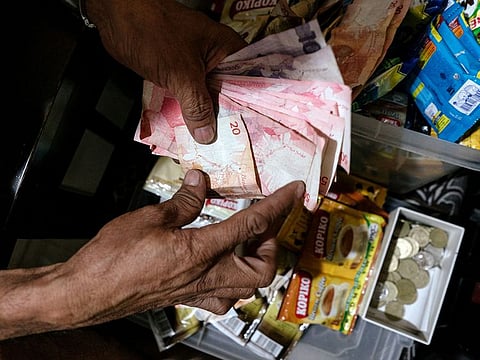Philippine peso drops further to Php52.423 against US dollar
Local currency weakens as fuel pump prices jump to biggest rate; stock up 2.98%

Manila: The Philippine peso slid further on Tuesday (March 15, 2022) as oil supply volatility risk lingers, giving non-resident Filipinos a virtual financial boost when remitting their earnings home.
The Philippine currency slid further 52.4230 against the greenback on Tuesday, from Php52.268 a day earlier, according to latest data from Bangkok Sentral ng Pilipinas (BSP).
The peso has been on a downward spiral owing to a number of macro-economic factors, having already lost about 10% of its value from the June 1, 2021 rate of Php47.72:$1, BSP data show.
For the first time since April 2020, the Philippine peso dropped beyond Php51 per dollar in January amid speculation the nation's trade deficit will widen as domestic demand improves.
On Tuesday, fuel prices at local pumps saw the highest rise this year so far, marking a double-digit fuel price hike marks 11th week of rising fuel costs.
‘Tigil pasada’
As diesel prices soared by more than Php13 ($0.25) per litre, some transport groups are gearing up for protests — even as truck drivers, and delivery riders eye “tigil-pasada” (stop-passage) amid the price spikes.
Local retailers, too, say LPG prices are likely to reach Php1,300 $24.83) per refill, if global oil prices continue to rise.
The BSP, in a monetary policy report published this month, stated its exchange rate outlook of between Php48.00 to Php53.00 per $1 for 2022 and 2023.
The on-going conflict between Ukraine and Russia, if it lingers, will have a huge impact on fuel prices, with knock-on affect on the Philippine currency and inflation.
Brent crude futures for May delivery was trading at $101.30 a barrel, as of 1.34pm GMT.
Stocks up
Philippine financial markets, however, was on the upswing on Tuesday, as the main index climbed 202.97 points to 7,019.92, up 2.98%. Property stocks, meanwhile, led gainers with the industry gaining 113.80, or 3.51%.
Banks and financial companies also rose by 3.07%, holding firms gained 2.95% while while industrials rose by 2.05%.
Sign up for the Daily Briefing
Get the latest news and updates straight to your inbox

